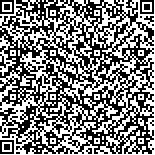| 引用本文: | 孙洪潇,唐文娇,刘超,耿慧霞,林卓如,张清春,于仁成.秦皇岛近岸海域脂溶性藻毒素污染状况与来源分析[J].海洋科学,2023,47(3):41-48. |
| |
|
| |
|
|
| 本文已被:浏览 496次 下载 788次 |

码上扫一扫! |
|
|
| 秦皇岛近岸海域脂溶性藻毒素污染状况与来源分析 |
|
孙洪潇1,2, 唐文娇1,3, 刘超1,2, 耿慧霞1, 林卓如1,2, 张清春1,4, 于仁成1,4,2,5
|
|
1.中国科学院海洋研究所, 海洋生态与环境科学重点实验室, 山东 青岛 266071;2.中国科学院大学, 北京 100049;3.中国海洋大学海洋生命学院, 山东 青岛 266590;4.青岛海洋科学与技术国家实验室海洋生态与环境科学功能实验室, 山东 青岛 266237;5.中国科学院海洋大科学研究中心, 山东 青岛 266071
|
|
| 摘要: |
| 2016年以来,秦皇岛地区多次出现麻痹性贝类毒素导致的中毒事件,但对于该海域脂溶性藻毒素的污染状况仍不够了解。2020—2021年,本研究通过对秦皇岛近岸海域为期1年的现场采样调查,应用高效液相色谱-质谱联用手段检测了浓缩浮游植物和贻贝(Mytilus galloprovincialis)、牡蛎(Crassostrea gigas)和扇贝(Chlamys farreri)3种贝类中脂溶性藻毒素的污染状况,并通过高通量测序手段对浮游植物样品中的潜在有毒藻种进行了分析。结果表明,在秦皇岛近海浮游植物样品和贝类中均可检出扇贝毒素-2(pectenotoxin-2,PTX2),其中2021年4—5月浓缩浮游植物样品中的PTX2毒素含量达到最高值1.36 ng/L,贝类中的PTX2毒素也主要在该时段检出,4月26日3种贝类中均可检出PTX2,含量最高达到1.10 μg/kg。对浮游植物样品的高通量测序结果表明,样品中检测到的鳍藻序列数与毒素含量具有显著线性相关性,推测PTX2毒素主要来自样品中的渐尖鳍藻(Dinophysis accuminata)和倒卵形鳍藻(D.fortii)等。综合一年的调查结果表明,秦皇岛近岸海域的脂溶性藻毒素主要为PTX2,其污染状况在春季最高,由于贝类中PTX2毒素含量很低,引发脂溶性藻毒素中毒事件的风险较小。本文调查结果可为秦皇岛近岸海域有害藻华和藻毒素的监测研究工作提供依据。 |
| 关键词: 脂溶性藻毒素 高效液相色谱-质谱联用 贝类 中毒 |
| DOI:10.11759/hykx20220222002 |
| 分类号: |
| 基金项目:科技部重点研发项目(2017YFC1600701,2019YFC1407901);国家自然科学基金项目(42106206);国家科技基础资源调查专项(2018FY100202) |
|
| Contamination status and origins of lipophilic marine toxins in Qinhuangdao coastal waters |
|
SUN Hong-xiao1,2, TANG Wen-jiao1,3, LIU Chao1,2, GENG Hui-xia1, LIN Zhuo-ru1,2, ZHANG Qing-chun1,4, YU Ren-cheng1,4,2,5
|
|
1.Key Laboratory of Marine Ecology and Environment Sciences, Institute of Oceanology, Chinese Academy of Sciences, Qingdao 266071, China;2.University of Chinese Academy of Sciences, Beijing 100049, China;3.College of Marine Life Sciences, Ocean University of China, Qingdao 266590, China;4.Laboratory for Marine Ecology and Environmental Science, Pilot National Laboratory for Marine Science and Technology (Qingdao), Qingdao 266237, China;5.Center for Ocean Mega-Science, Chinese Academy of Sciences, Qingdao 266071, China
|
| Abstract: |
| Shellfish contamination by paralytic shellfish toxins has led to repeated poisoning episodes in Qinhuangdao since 2016, but the contamination status of lipophilic marine toxins in this area remains poorly understood. Here, a year-round investigation was performed in Qinhuangdao from 2020 to 2021. Lipophilic marine toxins in net-concentrated phytoplankton samples and three bivalve species, such as mussel, Mytilus galloprovincialis, scallop, Chlamys farreri, and oyster, Crassostrea gigas, were analyzed by high performance liquid chromatography coupled with tandem mass spectrometry. High throughput sequencing data of the phytoplankton samples were analyzed to identify potentially toxic microalgae. Only pectenotoxin-2 (PTX2) was detected in the phytoplankton and shellfish samples. PTX2 content in net-concentrated phytoplankton samples was highest (1.36 ng/L) from April to May 2021. Similarly, PTX2 was detected in shellfish during this time, and the maximum PTX2 content in the three bivalve species was 1.10 μg/kg on April 26. A significant linear correlation was observed between the operational taxonomic unit number representing toxic Dinophysis spp. derived from the high throughput sequencing data and toxin content in net-concentrated phytoplankton. The dinoflagellatesD. acuminata and D. fortii, which were observed in phytoplankton samples by light microscopy, were the most likely originators of the PTX2. These results suggest that the major lipophilic marine toxin present in Qinhuangdao coastal waters is PTX2, which reached its highest level during the spring, but the risk of poisoning associated with PTX2 was low. These results will support the monitoring and research of harmful algal blooms and phycotoxins in the coastal waters of Qinhuangdao. |
| Key words: lipophilic marine toxins HPLC-MS/MS shellfish poisoning |
|
|
|
|
|
|
